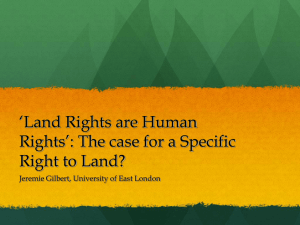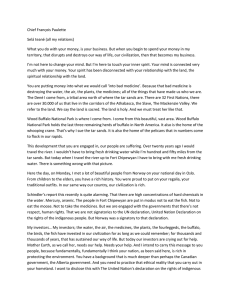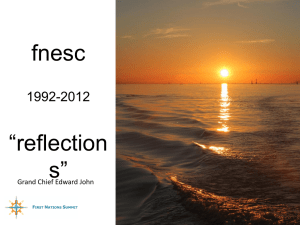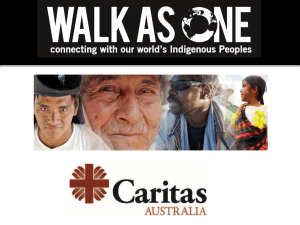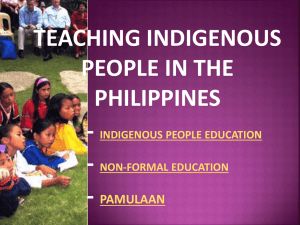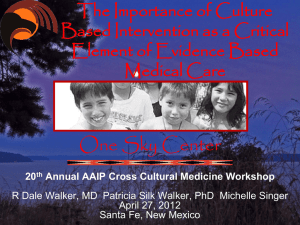Walk As One Quiz - Caritas Australia
advertisement
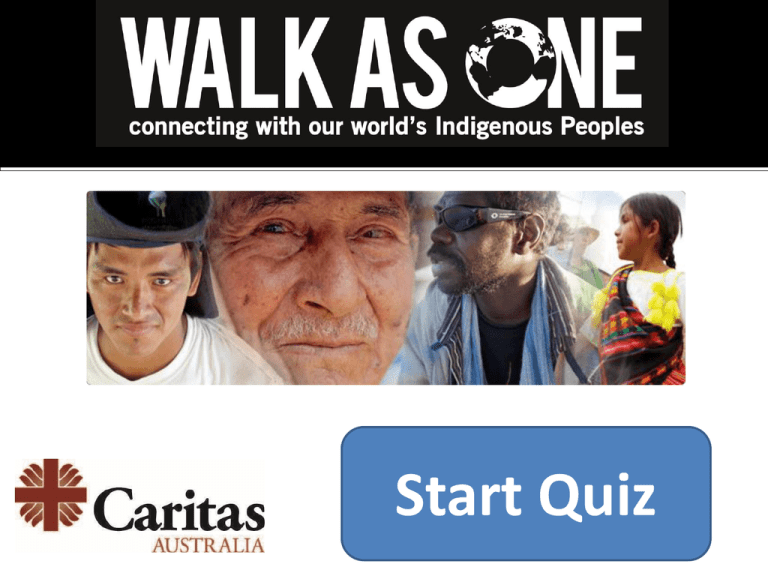
Start Quiz How many Indigenous Peoples live around the world? A) 180 million B) 370 million C) 520 million Answer: B. It is estimated that there are 370 million Indigenous peoples around the world. Among the Indigenous peoples of the world, levels of wealth, socio-economic status and access to social services fall behind that of nonIndigenous peoples. This is more of a reality in developing countries than in developed ones. True False Answer: False. The poverty and marginalisation of Indigenous peoples is not limited to developing countries. This is also the case in developed countries like Australia and Canada. For example: in Australia the median gross individual income for Indigenous peoples was $278 per week compared with $473 for non-Indigenous people in 2006. Indigenous peoples are also imprisoned at a rate 14 times higher than nonIndigenous peoples. Indigenous peoples make up roughly 5% of the world’s population, but 15% of people living in poverty. TRUE FALSE Answer: True. Indigenous peoples are more likely to experience poverty than nonIndigenous peoples. Who said this? ‘What has been done cannot be undone. But what can now be done to remedy the deeds of yesterday must not be put off till tomorrow.’ A) Pope John Paul II B) Kevin Rudd C) Mick Gooda Answer: A. Pope John Paul II said this when he made his historic visit to Alice Springs in 1986. There are always fewer Indigenous peoples in their country/region than nonIndigenous people. TRUE FALSE Answer: False. Bolivia is an example of one country where there are more Indigenous peoples than non-Indigenous peoples. Unfortunately they are still experiencing similar disadvantages to other Indigenous populations around the world. There are approximately 7,000 languages spoken in the world today. How many are estimated to be spoken by Indigenous Peoples? A) 1,500 B) 2,500 C) 4,000 Answer: C. It is estimated that while Indigenous peoples make up 5% of the world population they speak more than 4000 of the 7000 languages spoken in the world today. What percentage of the world’s Indigenous languages are predicted to become extinct or threatened with extinction by the end of the century? A) 25% B) 75% C) 90% Answer: C. Language specialists predict that up to 90% of the world’s Indigenous languages are likely to become extinct or threatened with extinction by the end of the century. There are a growing number of Indigenous peoples who are able to live in their traditional lands. TRUE FALSE Answer: False. The number of Indigenous people living on their traditional land is decreasing. In most cases, treaties between Indigenous peoples and the government of the country in which they reside have not been respected. TRUE FALSE Answer: True. Although treaties exist between most Indigenous people and the governments of the countries in which they reside, these treaties are often disputed either because they are thought of as unfairly negotiated, or because the treaty rights have been breached and obligations not fulfilled. The unemployment rate for Indigenous people aged 15-64 in 2008 was more than three times the unemployment rate of the non-Indigenous population. TRUE FALSE Answer: True. In 2008 16.6% of Indigenous people were unemployed compared to 5% of the civilian population. • State of the World’s Indigenous Peoples, 2009, http://social.un.org/index/IndigenousPeoples.aspx • Australian Bureau of Statistics: http://www.abs.gov.au • Education for Justice: www.educationforjustice.org • Richard Wainwright • Ramadian Bachtiar Please visit www.caritas.org.au/walkasone to take action


